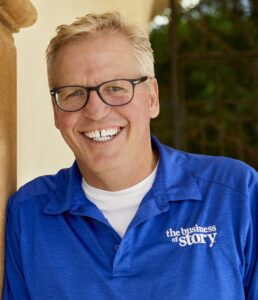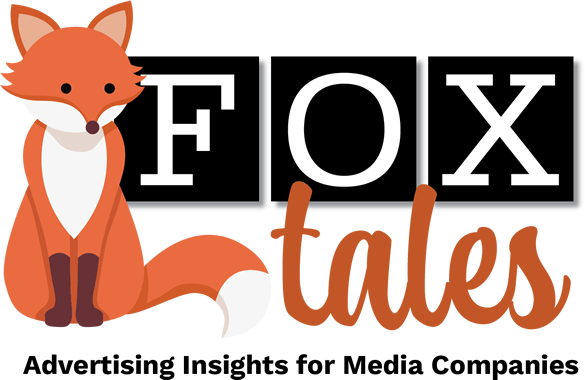It all comes down to storytelling. Marketing is a universal necessity in the process of selling products and services. It doesn’t matter what the product is and to whom it’s being sold. That said, marketing is a varied, subtle art. It has countless forms, from single-page magazine ads to 30-second TV commercials, radio spots and social-media posts. It could be part of a multifaceted campaign extending over months, or it could be brand-focused flash mobs, where people gather on a seemingly spontaneous basis to call attention to a product.
But again, it’s all about the storytelling, because in the end, consumers are motivated by some kind of psychic connection.
Within this realm is content marketing, a subset that deploys journalistic-style presentations to tell a brand story. This can take the form of a magazine article, a television news item, a slick video, an expository report.
The science of content marketing is Park Howell’s work. A 30-plus year veteran of advertising agencies, including 20 years of owning his own agency, Howell, based in Munds Park, Arizona (20 miles south of Flagstaff), understands the marketing landscape as well as anyone. In 2016, at the age of 55, he pivoted away from generalized agency work into content-based marketing. Now he operates The Business of Story, a firm that specializes in brand content. Howell also runs seminars and keynotes events.

Park Howell.
All of which makes Howell a great candidate for a Fox Tales interview. Here, we chat with Park about his business and his marketing philosophy.
Fox Tales: Brand storytelling might never have been as vital as it is now, in sales and marketing. Why is that?
Park Howell: We all live in a land of abundance with near-endless choices of who to buy from, work for, and choose to spend our time with.
But most brands don’t stand out in our crowded, noisy world because they don’t effectively communicate their unique value proposition. They get lost in the cacophony of communication we all compete in.
Those companies that rise to the top in the mayhem of every market category are the ones that know how to succinctly tell a clear and compelling story about the outcomes they achieve for their customers. Brands that communicate what they stand for stand out because their narrative creates the scarcity in the market needed to be the sought-after, differentiated and distinctive offering that makes them the category king.
Take Airbnb for instance. They have activated their “Know, Like and Trust” Storytelling Flywheel by being known as the travel brand that makes you feel like you Belong Anywhere (Airbnb’s concise value proposition). They become immensely likable by sharing amazing stories of the experiences their traveling customers enjoy around the world. And Airbnb delivers on its “Belong Anywhere” promise to build its trust by sharing those stories on platforms like the Airbnb Experiences Instagram profile, which leads to becoming better known, more likable and totally trusted.
Brand stories that illustrate what you stand for help you hack through the noise and hook the hearts of your ideal customer.
Fox Tales: Are there channels of brand storytelling that seem to be more effective in certain situations? Perhaps different modes work well in distinct verticals and for certain audiences?
Howell: Where you share your brand stories is as important as how you tell them. For instance, virtual gaming giant Blizzard Entertainment, the creators of World of Warcraft, have a strategic presence on streaming platforms like Twitch or online communities such as Discord where their younger demographic hangs out.
Ask most business-to-business executives about Twitch and Discord and you’ll get a confused stare because it’s not where most of their audiences get their information. B2B (which doesn’t have to mean Boring-to-Bored if you tell stories) will more likely gravitate to LinkedIn for its information.
Creators have overwhelmed TikTok and Instagram with their stories while solopreneurs gravitate to Etsy and Pinterest, while leveraging other channels like Instagram.
What virtual watering hole do your customers frequent and how do you greet them there with your stories? More often than not, LinkedIn features written stories amplified by an image (some storytellers tell me that they don’t even include an image with their LinkedIn post and attract more engagement with just their written stories). Instagram, of course, is all about the imagery. But most people don’t post an effective story to accentuate the power of their photo. They should.
YouTube and Vimeo, of course, are for your video stories.
So consider where your audience is hanging out and how they like to consume your stories on that channel.
Fox Tales: How would you define a “brand story?” What are the essential attributes?
Howell: Amazon founder Jeff Bezos describes a brand story as “What people say about you when you’re not in the room.” I would revise that sentiment to say, “Your brand is the story people tell about you when you’re not in the room.” If you haven’t clearly and succinctly defined what your brand story is, then your customers will freely share their version of your story and it probably won’t be the one you want to be told when you’re not in the room.
You can craft your brand story using the ABT (And, But, Therefore) Agile Narrative Framework that contains all of the attributes of a compelling brand narrative. They include:
- Specifically name your #1 audience.
- Define what they want relative to your offering and why what they want to achieve is important to them.
- But then introduce the problem you solve: Why don’t they have what they want?
- Therefore, have your audience imagine what success looks like when they invest in your offering describing how you are uniquely equipped to help them get it.
Since we started with the Airbnb Storytelling Flywheel, let’s draft an ABT for their brand story the results in their unique value proposition of Belong Anywhere:
As a world traveler, you want to explore interesting places AND wish to feel less like tourists and more like locals.
But typical tourism houses you in large hotels, promotes crowded tours and separates you from the indigenous experiences you seek.
Therefore, Airbnb accommodates exploring with authentic residences, where you feel like you belong anywhere.
Craft an ABT for your brand narrative and watch how your story becomes clearer, more concise and more compelling. The ABT helps you become better known for what you stand for and activates your “Know, Like & Trust” Storytelling Flywheel.
Fox Tales: Can you correlate effective brand storytelling with revenue growth?
Howell: Logic-driven executives often look down their noses at storytelling as being a woo-woo soft skill in business without any real ROI. But they can learn The ROI of Business Storytelling and the Cost of Being Boring.
For instance, Adelante Healthcare in Arizona grew by 600% when it fine-tuned its brand story about providing sustainable healthcare for all. It attracted the right doctors and staff who wanted to be in service in a community clinic, brought in patients regardless of their ability to pay, and focused its operations on becoming one of the nation’s leading sustainable healthcare centers.
Trimble, a Denver-based SaaS platform for the heavy construction and agricultural industries, increased engagement on its LinkedIn campaigns across five countries by 400% when it used the ABT story framework in its posts.
President John F. Kennedy raised more than $24 billion for the Apollo program by sharing a story about placing a man on the moon and returning him safely home before the end of the 1960s. He used a science fiction story that depicted all of the engineering marvels that would need to be funded to make this remarkable feat achievable.
On the cost side due to the lack of compelling storytelling, The Harris Poll with Grammarly found that American businesses lose approximately $1.2 trillion annually due to poor communication, which equates to one lost day of productivity per person per week. Ouch!
What is the lack of a clear and compelling brand story costing you?
Fox Tales: What impact does an effective brand story have on employees?
Howell: If you’re wondering what the lack of a compelling brand story is on your employees, then consider what happens when you lose that employee who is leaving due to poor communication. In fact, you can calculate your cost to replace that employee using the Business of Story Attrition Calculator.
Research by SHRM suggests that if an employee makes $60,000 per year, then it costs an average of $30,000 to $45,000 just to replace that employee—and roughly $54,000 to $120,000 in overall losses to the company.
Conversely, team members who know they are actors in a brand story of the positive impact they’re making with their colleagues, customers, and the communities they serve tend to stick around longer and contribute. According to Glassdoor, more than 77% of adults would consider a company’s culture before applying for a job there, and 56% say company culture is more important than salary when it comes to job satisfaction. Cultures are built on the stories told, shared and embraced.
Fox Tales: Bonus Question: How important is it for frontline sales teams to have that brand story down pat?
Howell: The solution almost every customer asks me for through my Business of Story training programs and mastery course is to help them “Build a common storytelling language across all disciplines.” Consistency is key, especially for frontline sales teams, to ignite and accelerate revenue generation.
But salespeople shouldn’t be relegated to tell a “pat” story about the brand. Instead, they should have a clear understanding of the brand narrative, and then share it in their own creative way using the proven story frameworks we to activate their version of the Storytelling Flywheel. The ABT helps you sell more by saying less.
Remember that your brand is the story people tell about you when you’re not in the room, so make sure you have your story dialed in.
